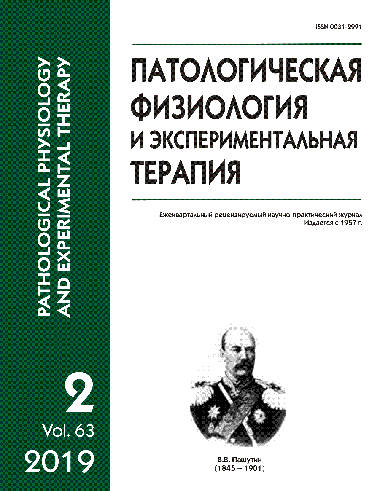A combination of low-dose glucosamine D and 2-deoxy-D-glucose enhances the cytotoxic effect on cultured human tumor cells
Keywords:
glucosamine D, 2-deoxy-D-glucose; HeLaG63, ECV304; MTT-test; flow cytometry; cell cycle; apoptosis
Abstract
Chemotherapy for tumors has traditionally been aimed at inhibiting proliferation and activating apoptosis of cancer cells. Aim. To perform a comparative study of effects of two glucose analogues, 2-deoxy-D-glucose (2-DG) and glucosamine D, at low concentrations (1.5-10 mM) on carcinoma cells (HeLaG63 line) and endotheliocytes (ECV304 line). Methods. Efficacy of these agents was evaluated by decreased cell viability (MTT test), permeability of the cell membrane, changes in progression by the cell cycle, and apoptosis (cytometric method) of cells cultured in mediums with different glucose concentrations. Results. The 48-h 2-DG treatment of cells in the studied concentrations reduced the proportion of cells in G1 and S-phases and their accumulation in G2\M phases. The same concentrations of glucosamine D, as distinct from 2-D, blocked the same cells in the G1\S phase of the cell cycle. The same concentrations of glucosamine D were more toxic to carcinoma cells than 2-DG. A combination of 2-DG and glucosamine D significantly greater increased the sub-G1 population of HeLaG63 cells than either agent alone. The treatment effectiveness increased with a decrease in the glucose concentration in the medium and/or with an increase in the agent dose. Endotheliocytes (ECV304) were less sensitive to both glucosamine D and 2-DG, and the effect of their combination did not differ from the effect of either agent alone, even at concentrations of 10 mM. Treatment of cells with 10 mM 2-DG and glucosamine D increased the cell membrane permeability for the fluorescent dye, propidium iodide, with the greatest effect recorded for HeLaG63 cells. Conclusion. Therefore, the anticarcinogenic efficacy of glycolysis inhibitors can be enhanced, which would allow to considerably reduce their doses and avoid potential side effects induced by therapeutically effective drug concentrations.Downloads
Download data is not yet available.
Published
27-05-2019
How to Cite
Giliano N. Y., Noskin L. A., Zhurishkina E. V., Stepanov S. I., Ibatullin F. M., Torshin B. I., Yakunina E. B., Alchinova I. B. A combination of low-dose glucosamine D and 2-deoxy-D-glucose enhances the cytotoxic effect on cultured human tumor cells // Patologicheskaya Fiziologiya i Eksperimental’naya Terapiya (Pathological physiology and experimental therapy). 2019. VOL. 63. № 2. PP. 41–49.
Issue
Section
Original research






